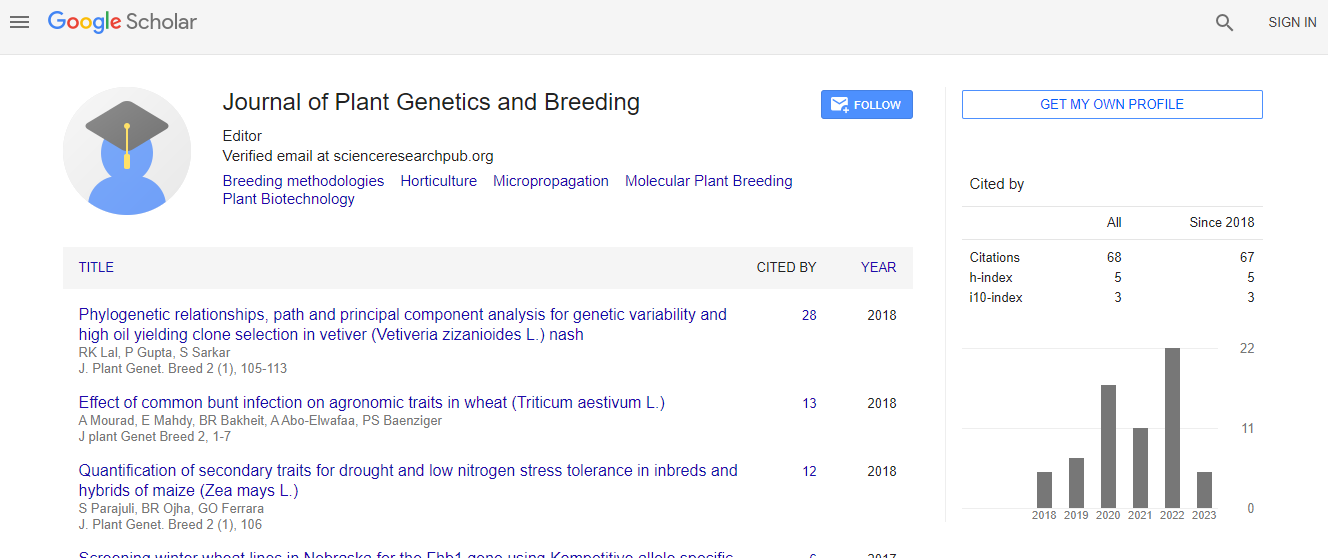Our Group organises 3000+ Global Conferenceseries Events every year across USA, Europe & Asia with support from 1000 more scientific Societies and Publishes 700+ Open Access Journals which contains over 50000 eminent personalities, reputed scientists as editorial board members.
Open Access Journals gaining more Readers and Citations
700 Journals and 15,000,000 Readers Each Journal is getting 25,000+ Readers
Google Scholar citation report
Citations : 86
Journal of Plant Genetics and Breeding received 86 citations as per Google Scholar report
Indexed In
- Google Scholar
Useful Links
Share This Page
Breeding methodologies
Plant breeding is defined as identifying and selecting desirable traits in plants and combining these into one individual plant. Since 1900, Mendel's laws of genetics provided the scientific basis for plant breeding. As all traits of a plant are controlled by genes located on chromosomes, conventional plant breeding can be considered as the manipulation of the combination of chromosomes. In general, there are three main procedures to manipulate plant chromosome combination. First, plants of a given population which show desired traits can be selected and used for further breeding and cultivation, a process called (pure line-) selection. Second, desired traits found in different plant lines can be combined together to obtain plants which exhibit both traits simultaneously, a method termed hybridization. Heterosis, a phenomenon of increased vigor, is obtained by hybridization of inbred lines. Third, polyploidy (increased number of chromosome sets) can contribute to crop improvement

 Spanish
Spanish  Chinese
Chinese  Russian
Russian  German
German  French
French  Japanese
Japanese  Portuguese
Portuguese  Hindi
Hindi 